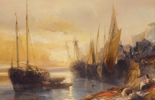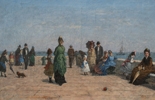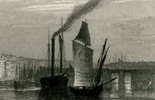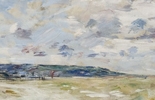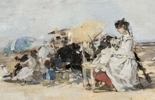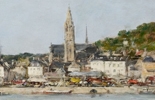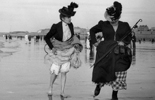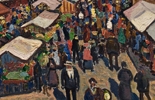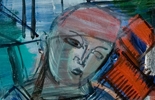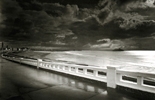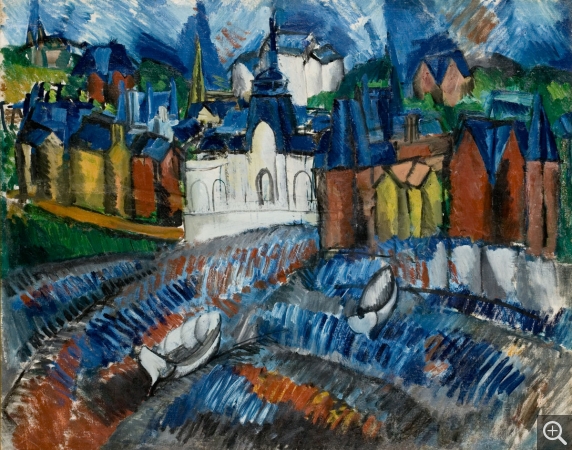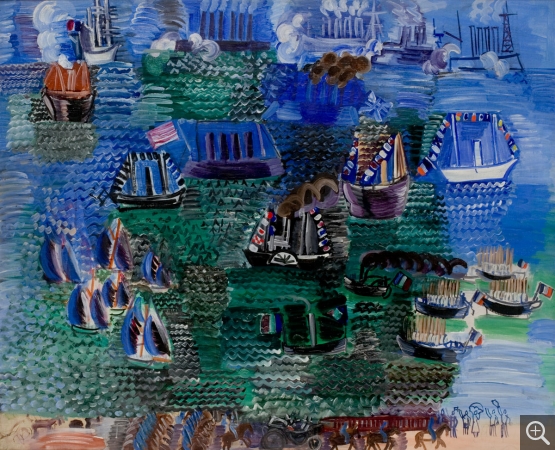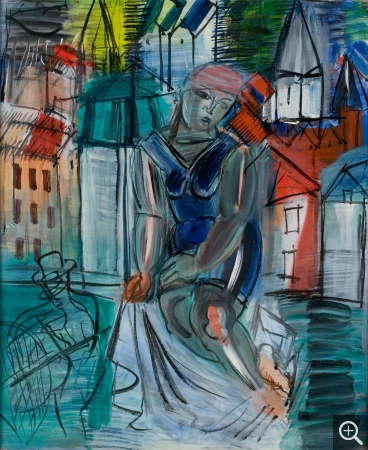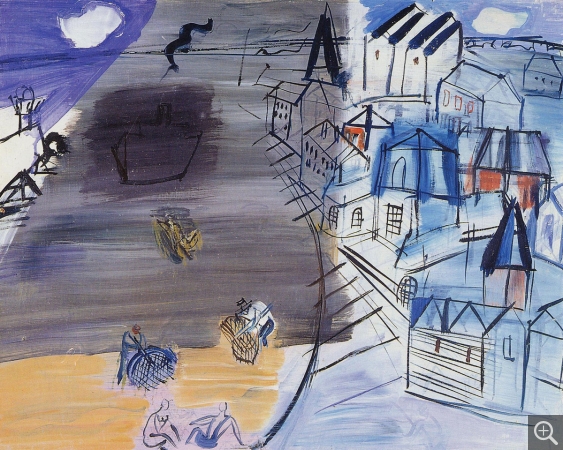L’estuaire de la Seine, l’invention d’un paysage
Like Eugène Boudin in the 19th century, Raoul Dufy is the 20th-century artist most closely linked with the landscape of the Seine estuary. Born in Le Havre in 1877, he studied at the local Ecole des Beaux-Arts before receiving a municipal grant to pursue his education in Paris. Dufy expressed his deep gratitude to the City of Le Havre throughout his life (his wife bequeathed 70 of his artworks to the museum in posthumous acknowledgement), and he maintained strong ties with his family there. Le Havre, Sainte-Adresse, and the small seaside towns at the mouth of Seine provided him with countless subjects, from quays and beaches to jetties, regattas and racecourses. He used them as sources of inspiration, from his first Impressionist explorations and his Fauve period to his move toward Cézanne in his later years, not to mention his decorative work with ceramics and textiles.
Dufy reworked his favourite motifs over and over again, adjusting them, combining them (in landscapes: people bathing, strolling, shrimp fishermen, boats, etc.), thereby creating series. The bather on the beach of Sainte-Adresse, for example, was explored in a variety of ways.
A final example of Dufy's attachment to Le Havre was his "Black Cargo" series. Suffering from illness in his home in the south of France, he returned to the bay of Le Havre and Sainte-Adresse as the subject of his painting, with a big black cargo ship entering the harbour. "The sun at its zenith is black. One is blinded by it and sees nothing." Blinded by the light he sought for so long, Dufy painted the cargo ship black, like the grim messenger of death about to appear.
Dufy reworked his favourite motifs over and over again, adjusting them, combining them (in landscapes: people bathing, strolling, shrimp fishermen, boats, etc.), thereby creating series. The bather on the beach of Sainte-Adresse, for example, was explored in a variety of ways.
A final example of Dufy's attachment to Le Havre was his "Black Cargo" series. Suffering from illness in his home in the south of France, he returned to the bay of Le Havre and Sainte-Adresse as the subject of his painting, with a big black cargo ship entering the harbour. "The sun at its zenith is black. One is blinded by it and sees nothing." Blinded by the light he sought for so long, Dufy painted the cargo ship black, like the grim messenger of death about to appear.

- Raoul DUFY (1877-1953), The Marie-Christine Casino and Le Havre Beach, ca. 1910, oil on canvas, 65.5 x 81.5 cm. . © MuMa Le Havre / Florian Kleinefenn — © ADAGP, Paris, 2015
- Raoul DUFY (1877-1953), Maritime Festival and Official Visit to Le Havre, oil on canvas, 91.5 x 111 cm. . © MuMa Le Havre / Florian Kleinefenn © ADAGP, Paris, 2015
- Raoul DUFY (1877-1953), Woman Bather in Le Havre, vers 1935, oil on canvas, 65 x 54 cm. . © MuMa Le Havre / Florian Kleinefenn — © ADAGP, Paris, 2015
- Raoul DUFY (1877-1953), Black Cargo Ship at Sainte-Adresse, 1948-1952, oil on hardboard, 40.4 x 51 cm. © Cahors, musée Henri Martin (dépôt du MNAM) — © ADAGP, Paris, 2015


